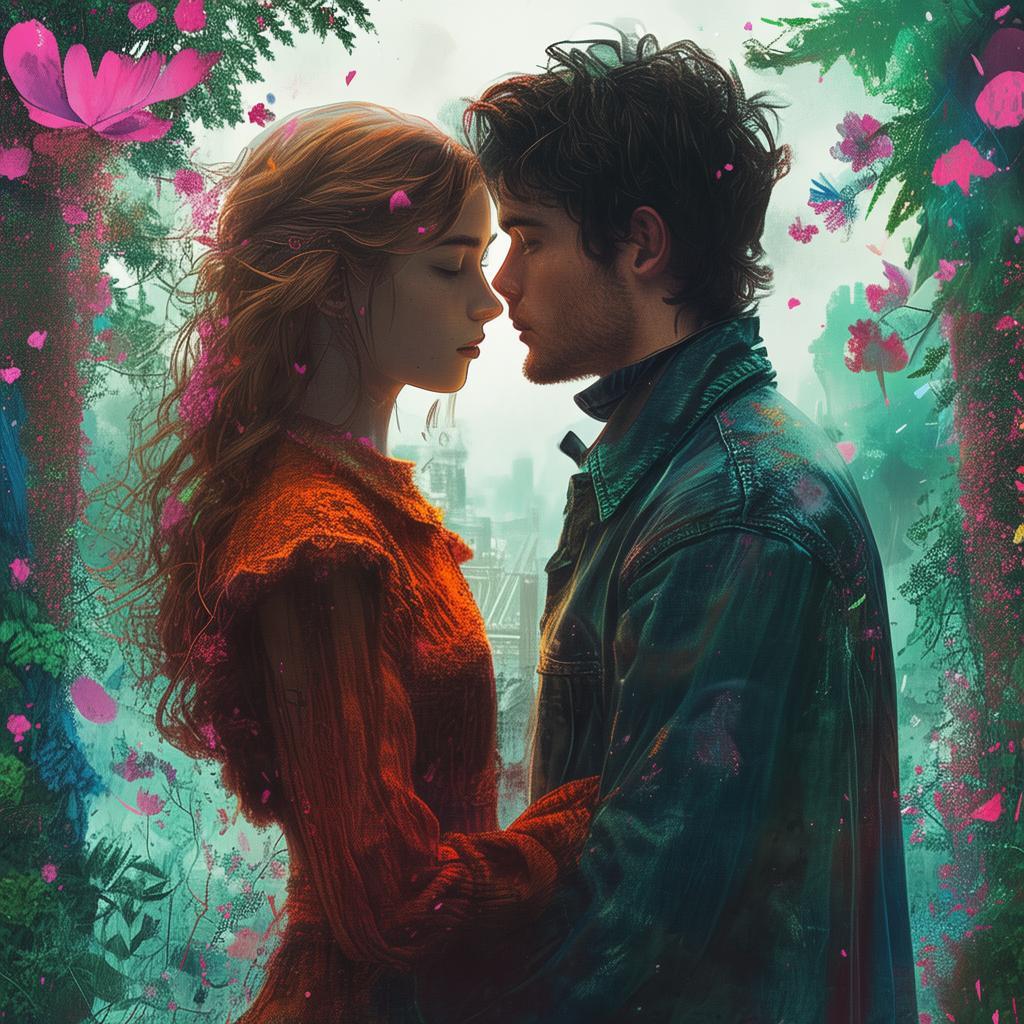Whispers of the Past: A Teacher's Forbidden Love
The mist clung to the cobblestone streets of the quaint English village of St. James, as if it were a living entity, guarding the secrets that lay beneath the surface. The year was 1924, and the headmaster of St. James Primary School, Mr. Arthur Langley, was a man of many contradictions. By day, he was a beacon of knowledge and discipline, commanding the respect of his students and his colleagues. But by night, his heart danced to a different rhythm, a rhythm forbidden and dangerous.
Arthur's fascination with the past was as consuming as his love for the present. His home was filled with artifacts and relics from bygone eras, each one a story waiting to be told. It was during one such night, when the moonlight cast a silver glow over his collection, that he first encountered the enigmatic portrait of a woman from the 18th century. Her eyes seemed to pierce through the canvas, calling to him from across the centuries.
Intrigued and enchanted, Arthur began to research the woman's life, her name was Lady Eliza, and her story was one of tragedy and mystery. She had been a lady of the manor, a woman of means and influence, yet her final days were shrouded in secrecy and sorrow. It wasn't long before Arthur found himself drawn to her, not just as a historical figure, but as a woman whose spirit seemed to resonate with his own.
The forbidden love that blossomed between Arthur and the spirit of Lady Eliza was a love that defied time and space. They communicated through the portrait, their words etched into the canvas, their emotions flowing freely across the divide. Arthur's heart ached for her, and she, in turn, offered him a glimpse into her world, a world of beauty and pain, love and loss.
But as the bond between them grew stronger, so did the whispers of disapproval from those around him. His colleagues, his students, even his own family, were appalled by the headmaster's infatuation with a ghost. Yet, Arthur remained steadfast, his heart bound to the woman who had captured his imagination and his soul.
One fateful night, as the village slumbered, Arthur decided to visit the manor where Lady Eliza had once lived. He had heard tales of the manor being haunted, but he was undeterred. The journey was long and arduous, but when he finally arrived at the dilapidated gates, he felt a sense of purpose that had been missing from his life for so long.
Inside, the manor was a labyrinth of decay and history. Arthur wandered the halls, his fingers brushing against the walls, feeling the chill of the past. It was then, in the heart of the manor, that he found a hidden room, a room that had been locked and forgotten for generations.

Inside the room was a mirror, and as Arthur approached it, he saw not just his reflection, but the image of Lady Eliza. She was standing before him, her eyes filled with tears of joy and sorrow. "Arthur," she whispered, "I have been waiting for you."
The moment was surreal, a crossing of time and space, and as they shared a tender embrace, Arthur realized that the love he felt for Lady Eliza was no less real than the love he shared with his students and his family. It was a love that transcended the boundaries of the living and the dead.
Yet, as the connection between them deepened, so did the danger. The villagers began to notice the changes in Arthur, the way he spoke of the past, the way he seemed to be haunted by visions of Lady Eliza. The headmaster's behavior grew erratic, and soon, the whispers of madness began to follow him.
It was then that Arthur made a decision that would forever alter the course of his life. He would reveal the truth, the truth that he and Lady Eliza were more than just a teacher and a ghost; they were lovers bound by an eternal love that defied the laws of time and nature.
The villagers were shocked, appalled, and yet, there was a glimmer of understanding in their eyes. They had seen the change in Arthur, the way he had become more alive, more passionate, and more human.
As the story of Arthur and Lady Eliza spread through the village, it sparked a debate about the nature of love, the power of the past, and the boundaries of human connection. The headmaster's love, once forbidden and dangerous, had become a beacon of hope, a testament to the enduring power of love.
In the end, Arthur's love for Lady Eliza was not just a love story; it was a story of transformation, of finding oneself in the face of adversity, and of the unbreakable bond that can be formed between two souls, regardless of the time or place.
And so, in the heart of St. James, the story of Arthur and Lady Eliza became a legend, a tale of forbidden love that would be told for generations to come.
✨ Original Statement ✨
All articles published on this website (including but not limited to text, images, videos, and other content) are original or authorized for reposting and are protected by relevant laws. Without the explicit written permission of this website, no individual or organization may copy, modify, repost, or use the content for commercial purposes.
If you need to quote or cooperate, please contact this site for authorization. We reserve the right to pursue legal responsibility for any unauthorized use.
Hereby declared.









